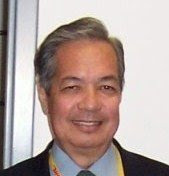A Conversation with Father Joe
In school geography, from the earliest grades on, we generally referred to Jolo as belonging to an extremity, as in “from Aparri to Jolo”, to describe the length of the Philippines’ territorial reach. It’s coordinates per Google are as follows: 6°0′N 118°2′E.
Once upon a time the islands conjured, in our minds, images of swift, colorful vintas often, rightly or wrongly, feared for its reputation as the carrier of fierce warrior-pirates. At one time in fact, the smuggling of ‘blue seal’ cigarettes and other contraband was a primary source of income for the islanders.
There are many tribes that populate the islands. The most well known of these are the Tausugs and the Badjaos. The former are known for their fierceness and bravery (their tribal name is a combination of the words tau which means people, and ma-isug meaning brave) . The latter, the Badjaos, are known as adventurous seafarers and can reputedly ‘smell’ the weather and can sense an approaching storm at sea several hours before others can discern them. Since they spend most of their lives at sea and their ‘base homes’ are huts on stilts near the shore, it is said that when a new baby is born the badjao mother throws the little one into the sea. If the baby survives then he belongs in the tribe. If the baby drowns and dies then they conclude it would not have survived long anyway as falling into the water is a daily experience for badjao youngsters. ‘Sink or swim’ literally is a matter of life and death for them.
Jolo has been in the news over the past few years and very much less because of its colorful tribes but more because of the seemingly incessant violence visited upon the islands by groups of gunmen, some of whom are allegedly ‘Al Qaeda’ type ‘rebels’ also referred to as the ‘Abu Sayyaf’, while others are no more than gangs and thugs who kidnap, kill and rob natives and visitors alike.
What got me into writing about Jolo is that about a week ago, at a global family reunion in Houston, Texas I got reconnected with one of the eminent members of the generation in the family immediately preceding mine, the Rev. Joe Ante, OMI. During a brief lull in the reunion activities he and I got to talk a bit about Jolo. Father Joe, as we and his many parishioners call him, has been a parish priest in Jolo since 1964. And no, he was not exiled there by his superiors in the Oblate of Mary Immaculate order. In fact he was the top superior in that order at the time and at another time had also been the president of the Notre Dame University system in Mindanao.
“ I volunteered for the Jolo assignment because no one wanted to go there. As the superior I felt it incumbent upon me to take on this mission myself,” he explained.
“So how does a Catholic missionary function and survive in a seemingly hostile Muslim environment?” I asked as I had heard that Father Joe and others in the order have been targets of assassination attempts including three incidents of grenade attacks.
“I got lucky”, he said with a smile as he explained how one of the grenades missed him and rolled into the cathedral ( no one was hurt).
His mission, he explained, was one of education and the providing of skills to both the Christian and Muslim youth in the island.
“If our youth are educated,” he said, “then there is a better chance that we can find peace and togetherness in the future. It is a necessary, preliminary process”.
He explained that the natural hostility that Muslims might have for Christian missionaries is somewhat tamped down because he does not make any overt moves to try and ‘convert’ his Muslim students. In fact he demonstrates great respect for his students and Muslims in general and uses his extensive knowledge of their culture to ensure that nothing he does offends their religious sensitivities. He also maintains a very cordial and mutually informative relationship with Muslim religious leaders in the island and gets to interact with them on a regular basis.
He avers that educating the youth of the islands, including those from the Muslim population, gives him satisfaction that he is fulfilling his Christian mission. He does devote much of his time and effort attending to the religious needs of the 2,000 or so Catholics who are still in the islands.
Still he says, it is a hostile and violent place. It is reported that many officials who supposedly occupy local positions have relocated themselves and their families to places like Manila, Cebu and Zamboanga.
What about kidnappings, is that something that concerns him? What if he gets kidnapped by the Abu Sayyaf?
“I’ll cross that bridge when I get to it” he said with a smile, “yet I know I will always be an educator and if they care to listen to me we may even get somewhere,”.
Bravery and heroism take many forms. Even as I write this Fr. Joe is on his way back to Jolo and his mission. His family located around the world all pray that he makes it back for our next family reunion in the summer of 2012.
ldq44@aol.com
Wednesday, November 3, 2010
Subscribe to:
Post Comments (Atom)
.jpg)
.jpg)
No comments:
Post a Comment